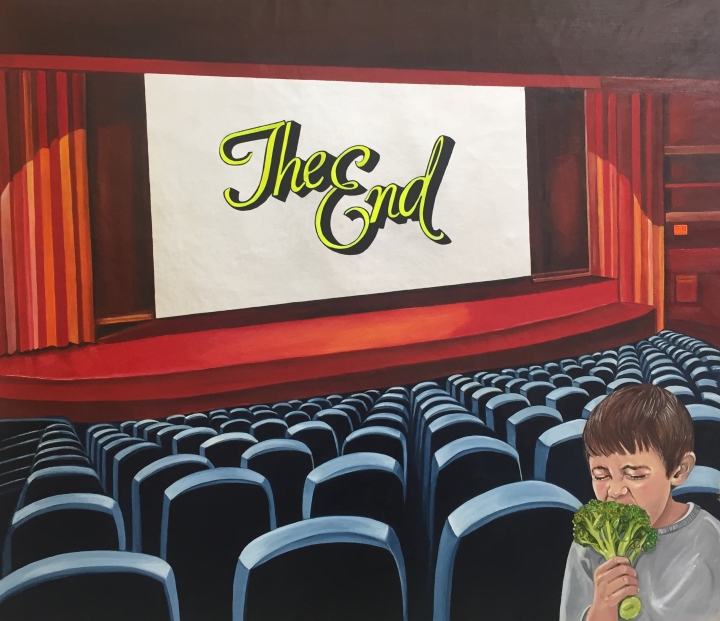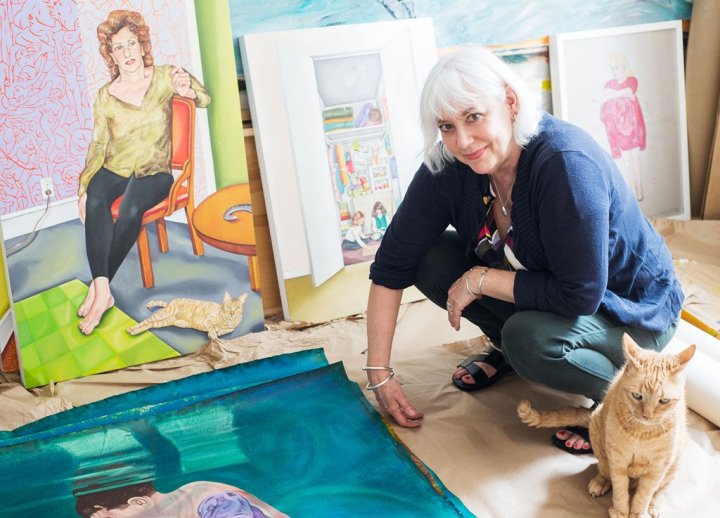
Er is natuurlijk het strijdbare, jaren tachtig vorige eeuw eerste grote feministische golf, maar al vlug haalde de eigenzinngiheid het op het pamfletaire: oog voor kwetsbaarheid, en dat op de eerste plaats bij degenen die geacht werden aan de andere kant te staan, kracht versus beminnelijkheid om de twee nog eens uit te vergroten.
Mannen in nood wordt het onderwerp van een serie werken, maar juist daardoor hun mooiste kant toonden: het behulpzame, het gevoel voor de andere man.
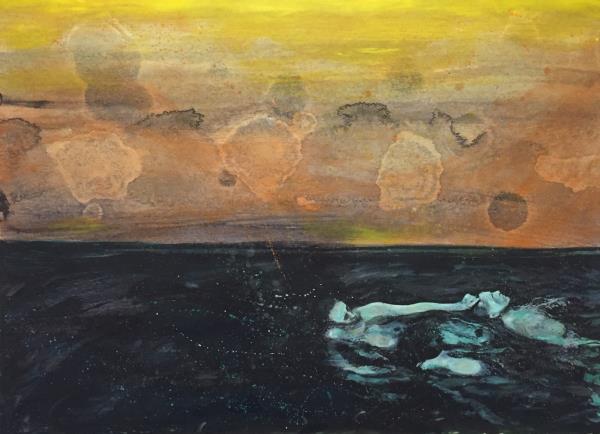
Het oogde allemaal een beetje stormachtig met veel water waarin de verhalen zich afspeelden, en je voelt de strijdbaarheid verschuiven naar het vinden van een eigen taal die een publicist ‘magical visual parables’ noemt.
Vertellen maar dan over een gestolde tijd waarin vooral de ruimtes hun functionele geborgenheid zijn kwijtgeraakt.
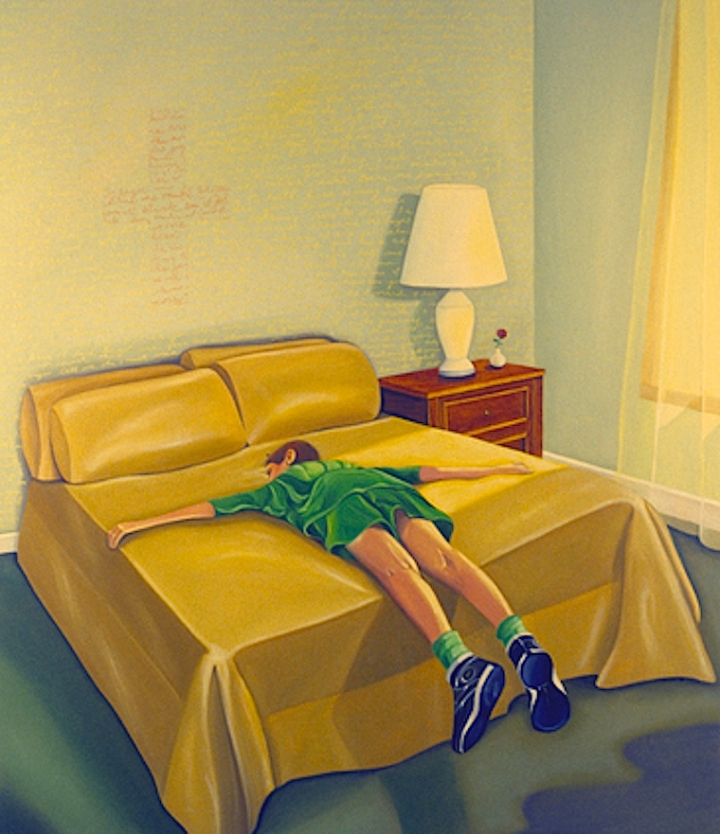
De personages, vaak kinderen, zijn uit die ruimtes uitgegroeid en vinden geen weg terug. Er zijn extra verborgen of moeilijk zichtbare letters of boodschappen (kruis en tekst op de muur) waarin ze ooit hebben geloofd of die geacht werden voor het nodige heil te zorgen, of als …
Het onuitgesprokene wordt belangrijker dan een duidelijke dialoog. Wat ons drijft hebben wij misschien wel te veel verpakt in comfort en gemakkelijkheid ten koste van het mysterieuze. Nu is je leven voor iedereen zichtbaar. Je bent nooit alleen. Maar altijd eenzaam.
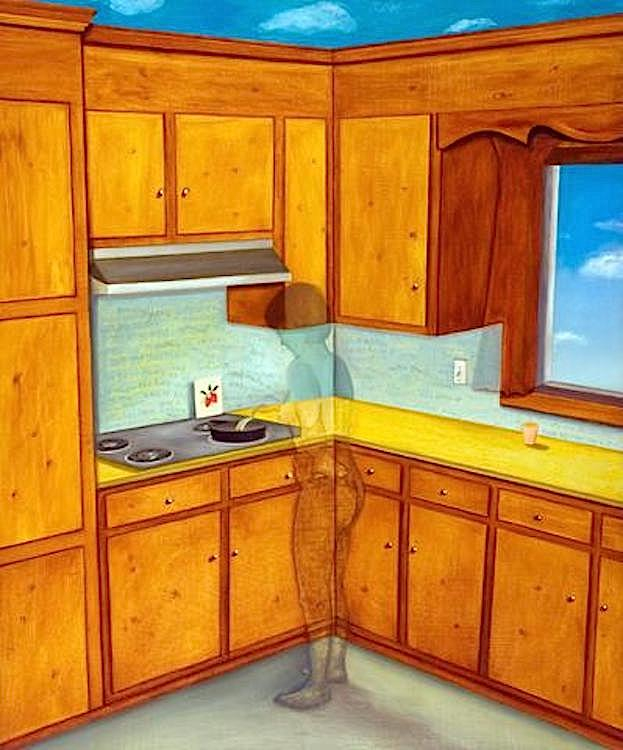
Robin Tewes’s artwork is drawn from personal life experiences that are transformed into magical visual “parables.” Her narrative paintings penetrate and expose the political and social hypocrisies of society through the prism of humor, beauty and incisive intellect. Whether dealing with issues of war, religion, feminism, or the harsh and glorious surprises that life throws at us, Tewes’ visual responses reveal trenchant insights wrapped in a cocoon of empathy. At the same time, the artist invites the viewer to question his/her own beliefs. Over the years she has experimented with various techniques and mediums in her pursuit of enriching and expanding centuries old dialogues artists have had with the figurative painting tradition.

Rooms — intimate spaces of one’s own design, private and often secret, walled off from the outside world — figure dominantly in Tewes’ paintings and drawings. Working in series, i.e., Rooms With People, Rooms Without People, she frequently incorporates family members, transmuting her subjects into phantasmagoric fables that reflect on contemporary life. Tewes makes clear that an enclosure’s isolation is illusionary. One is never alone, words rush in and are scratched onto walls, shifting the meaning of the paintings. Her minimally spare “rooms” usually contain windows, doors and hallways giving us glimpses of the fluidity of entry and exit. In these works, disengagement from societal interaction is not possible, a human presence is always palpable.
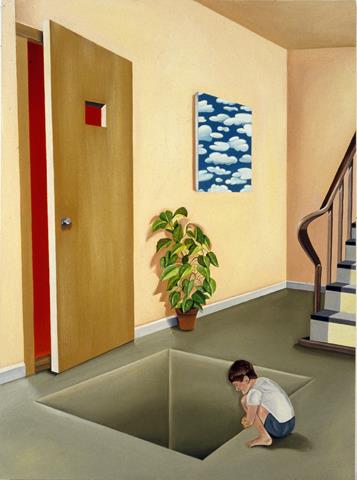
Robin Tewes was born (1950) and raised in the working-class Richmond Hill, Queens neighborhood. She was interested in art from an early age and attended the High School of Art and Design in Manhattan, majoring in cartooning. After working and traveling, she attended Hunter College in New York City (BFA, 1978), where her key influences were narrative, representational artists such as Frida Kahlo and Edward Hopper, as well as the Surrealists.
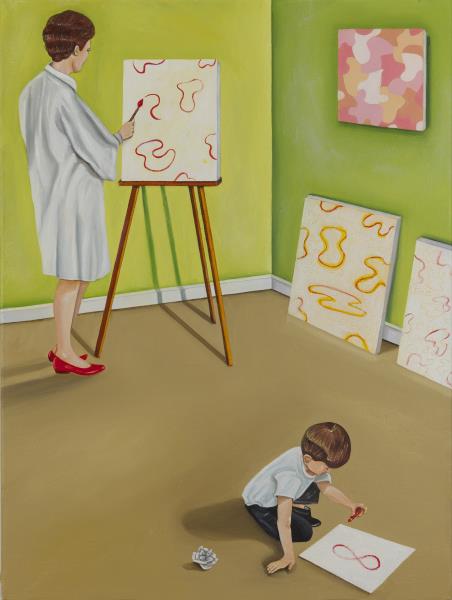
After graduating, Tewes became involved with a group of young artists living and working in the poor-to-working class Lower East Side neighborhood. Together, they founded the P.S. 122 painting Association in 1979 and began renting classrooms in the abandone school, which they converted into studio spaces. That association, in existence today, evolved into the future Performance Space New York. During that time, Tewes also co-founded the artists collective, Fifth Street Gallery, one of the first in the Lower East Side.

“I’m interested in that subconscious current. I think about things unspoken … the energy left in a room after a certain conversation.”
At times that energy took the form of scratched, nearly invisible graffiti on walls, floors and furniture. Critics speculated that the ambiguous scribbles might represent plaintive, rueful traces of recent exchanges, thought projections, or conversations to come, intimating marital discord, sexual tension, irreconcilable disputes, and lonely childhoods.

“It’s so hard not to let the outside world define you. The business of art is really perverted. It’s always shifting and changing, but usually it’s white men, still, but especially back then. Art dealers would gravitate towards work they liked and understood, and that’s all real and fine and acceptable, but it’s tunnel vision, because it’s not understanding or accepting work outside of their experience. So the dealers buy and perpetuate work that interests them. There are always exceptions to this rule, but it was a general rule. The collectors then would buy it, and the writers then would write about it, and the art historians then would curate it. So it was this small little ball of wax that kept recycling in itself. It’s best when you can have many different points of view and many different visions of understanding and women were really kept out of that, and artists of color were too. It’s still a problem.”

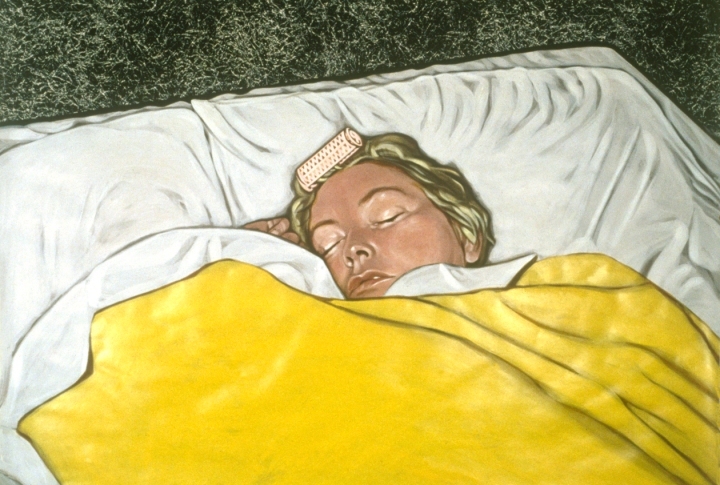
“This is a portrait of my deceased mother Edna Quinn Tewes. I call it “The Sleeper Woman with Curler.”
https://www.neoimages.com/artistportfolio.aspx?pid=3717
http://adambaumgoldgallery.com/
